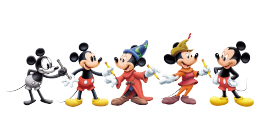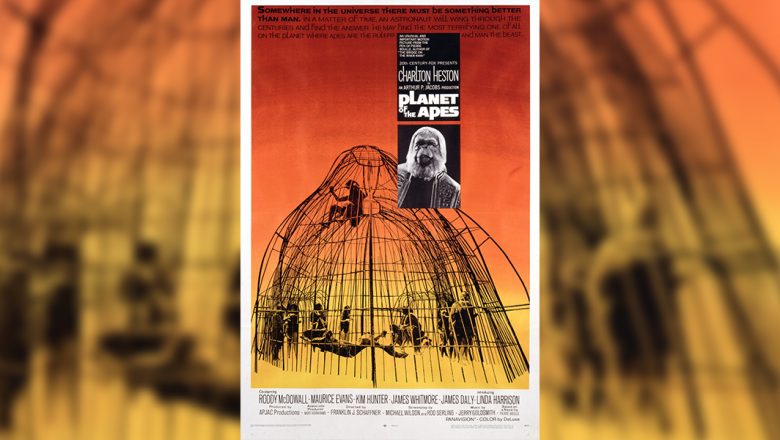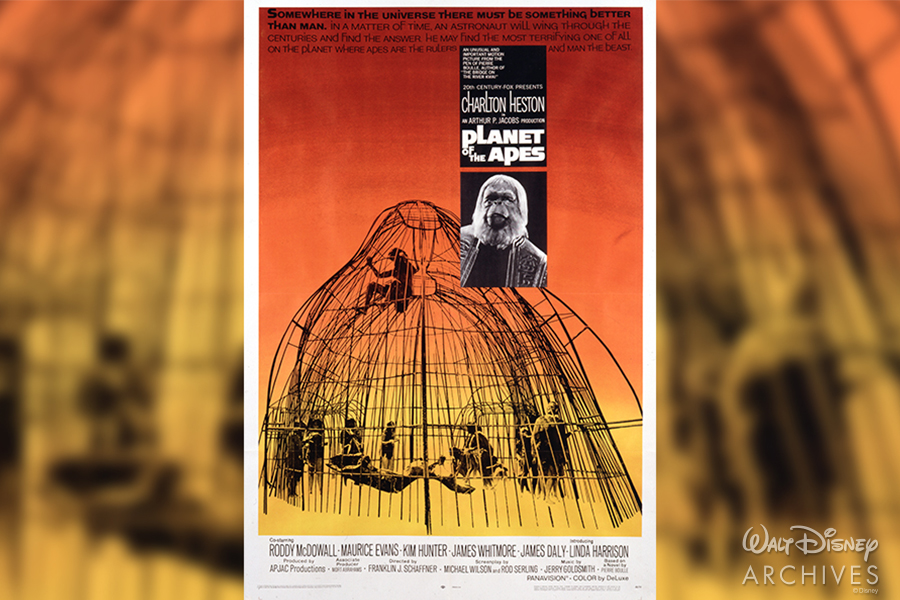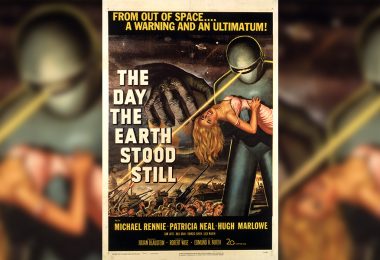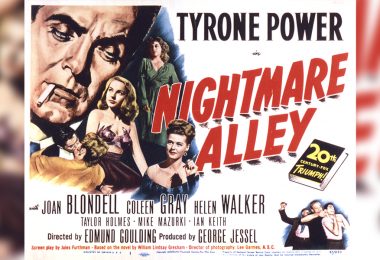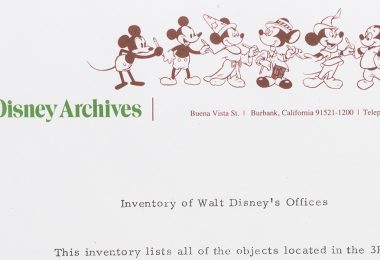By Christina Pappous, Walt Disney Archives
Fall is officially upon us and Halloween is creeping just around the corner! To celebrate, our 20th Century Fox “Spooktacular” continues on to our next stop: that most swingin’ of decades—the 1960s. We’re not “monkeying” around when we say our next film explores what could await humanity in a not quite so distant future… Join us as we take a journey to the Planet of the Apes (1968)!
The world of Planet of the Apes is one strikingly similar to Earth, as astronaut George Taylor (Charlton Heston) and his crew discover upon crash-landing their spaceship. However, they quickly find out a startling, disturbing difference: apes are the ruling class of this seemingly strange planet while humans are wild, mute, and treated like animals.

In a sudden attack by gorilla soldiers, Taylor is wounded and captured, losing his crewmates in the flurry of violence. Brought to Apetown, Taylor comes under the observation of Zira (Kim Hunter), a kind chimpanzee scientist and her fiancé, the archaeologist Cornelius (Roddy McDowall).

Although Taylor persuades them of his intelligence and humanity, the pompous Dr. Zaius (Maurice Evans) thinks otherwise and disparages any possibility of an advanced human society. Zaius proves himself to be a formidable foe, tracking down Taylor, Zira, Cornelius, and their allies when they flee to the “Forbidden Zone.”
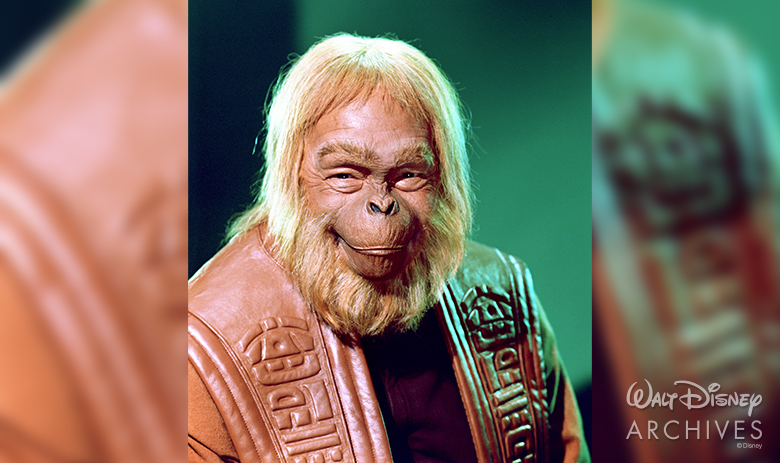
The four of them clash among artifacts of advanced human civilization, like eyeglasses and talking dolls; Zaius admits that he knew all along of its existence and before Taylor sets off to find answers as to why ape society eclipsed that of man, he warns him that “you may not like what you find.” And what does Taylor find among the crashing waves but a half-sunken Statue of Liberty…and with it, the irrevocable proof that humanity brought about its own end on Earth. Sinking to his knees, he screams, “We finally really did it. You maniacs! You blew it up!”

The making of Planet of the Apes posed some unique challenges for its cast and crew; namely, how could its human actors be convincingly transformed into sophisticated chimpanzees, orangutans, and gorillas? John Chambers and Dan Striepeke, the two men responsible for answering this question, began by observing said primates at the zoo, carefully studying facial features and making note of the subtlest changes in expression. As the makeup artists tested out different designs, Chambers agreed with director Franklin Schaffner that “the apes should not be made to look like hair-faced human beings […] in other words, we carried the evolutionary process only very slightly beyond what you might call ‘basic ape.’”
However, it was crucial that the actors’ expressions were still able to come through the prosthetics, and after much trial and error, the final facial designs for the ape characters were broken down into separate pieces for the nose, brow, mouth and chin. Kim Hunter, Roddy McDowall, and the other ape actors discovered that they had to exaggerate their reactions, essentially “overacting” beneath their prosthetics in order for their performances to really register on camera.
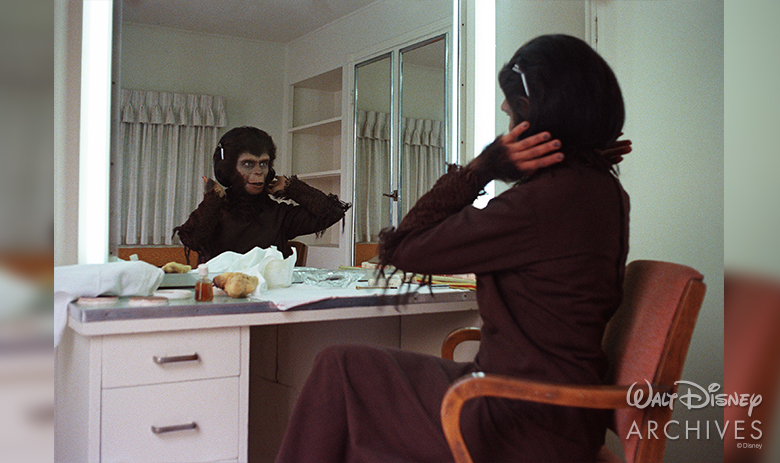
Costume design proved to be a challenge for designer Morton Haack as well, moving from initial designs for contemporary business suits for the apes to costumes that were more uniform and streamlined, befitting the advanced ape society. Haack used color to distinguish between the different simians: green for the chimps, brown for the orangutans, and purple for the gorillas. Amongst the many wonderful historical costumes in our collections at the Walt Disney Archives is a costume worn by one of the gorilla soldiers in the film.
Despite these unique design challenges, Planet of the Apes would prove to be a massive success with audiences and critics alike, resonating across generations through a unique visual approach to the source material. Followed by numerous sequels, a television series, and copious amounts of merchandise, the film remains a stalwart of the science fiction genre.
See for yourself a planet where apes evolved past humans, and venture, if you dare, to the Planet of the Apes!


